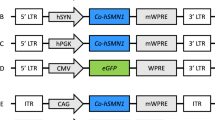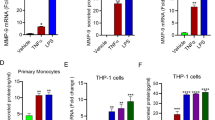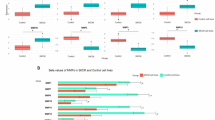Abstract
Aim:
The aim of this study was to investigate the mechanism of the effects of Sinomenine (SIN) on the invasion and migration ability of activated human monocytic THP-1 cells (A-THP-1). Sinomenine is a pure alkaloid extracted from the Chinese medical plant Sinomenium acutum.
Methods:
Human monocytic THP-1 cells were induced to differentiate into macrophages with phorbol 12-myristate 13-acetate (PMA). Cells were treated with different concentrations of SIN. The invasion and migration ability of cells was tested by in vitro transwell assays. The levels of CD147 and MMPs were evaluated by flow cytometric analysis and zymographic analysis, respectively. The mRNA expression of CD147, MMP-2, and MMP-9 was measured by RT-PCR.
Results:
The invasion and migration ability of A-THP-1 cells was significantly inhibited by SIN in a concentration-dependent fashion; at the same time, the levels of CD147, MMP-2, and MMP-9 were markedly down-regulated. This inhibitory effect was most notable at concentrations of 0.25 mmol/L and 1.00 mmol/L (P<0.01).
Conclusion:
A possible mechanism of the inhibitory effect of SIN on cell invasion and migration ability is repression of the expression of MMP-2 and MMP-9, which strongly correlates with the inhibition of CD147 activity.
Similar content being viewed by others
Log in or create a free account to read this content
Gain free access to this article, as well as selected content from this journal and more on nature.com
or
References
Zhou H, Wong YF, Wang J, Cai X, Liu L . Sinomenine ameliorates arthritis via MMPs, TIMPs, and cytokines in rats. Biochem Biophys Res Commun 2008; 376: 352–7.
Hua H, Chen X . Mechanistic study of sinomenine on analgesic and anti-inflammatory actions. J Xi-an Med Univ 1989; 4: 346–9. Chinese.
Liu L, Buchner E, Beitze D, Schmidt-Weber CB, Kaever V, Emmrich F, et al. Amelioration of rat experimental arthritides by treatment with the alkaloid sinomenine. Int J Immunopharmacol 1996; 18: 529–43.
Li L, Zhang CL, Song BW . Research of the pharmacological effect of sinomenine and clinical application. Tradit Chin Drug Res Clin Pharmacol 2006; 7: 17–4. Chinese.
Li XJ, Yue PY, Ha WY, Wong DY, Tin MM, Wang PX, et al. Effect of sinomenine on gene expression of the IL-1β-activated human synovial sarcoma. Life Sci 2006; 79: 665–73.
Yamasaki H . Pharmacology of sinomenine, an anti-rheumatic alkaloid from Sinomenium acutum. Acta Med Okayama 1976; 30: 1–20.
Wang Y, Fang YF, Huang WH, Zhou X, Wang MH, Zhong B, et al. Effect of sinomenine on cytokine expression of macrophages and synoviocytes in adjuvant arthritis rats. J Ethnopharmacol 2005; 98: 37–43.
Li F, Li XF, Hu XF, Wang XX, Xu K, Chen Z . The serum matrix metalloproteinase-9 level and its significance in rheumatoid arthritis. Chin J Rheumatol 2005; 9: 554–6. Chinese.
Gabison EE, Hoang-Xuan T, Menashi S . EMMPRIN/CD147, an MMP modulator in cancer, development and tissue repair. Biochimie 2005; 87: 361–8.
Liu JH, Li WD, Teng HL, Lin ZB . Immunopharmacological action of sinomenine, an alkaloid isolated from Sinomenium acutum, and its mechanism of action in treating rheumatoid arthritis. Acta Pharm Sin 2005; 40: 127–31.
Liu L, Buchner E, Beitze D, Schmidt-Weber CB, Kaever V, Emmrich F, et al. Amelioration of rat experimental arthritides by treatment with the alkaloid sinomenine. Int J Immunopharmacol 1996; 18: 529–43.
Kok TW, Yue PY, Mak NK, Fan TP, Liu L, Wong RN . The anti-angiogenic effect of sinomenine. Angiogenesis 2005; 8: 3–12.
Bremner TA, Chatterjee D, Han ZY, Tsan MF, Wyche JH . THP-1 monocytic leukemia cells express Fas ligand constitutively and kill Fas-positive Jurkat cells. Leuk Res 1999; 23: 865–70.
Cao QZ, Lin ZB . Ganoderma lucidum polysaccharides peptide inhibits the growth of vascular endothelial cell and the induction of VEGF in human lung cancer cell. Life Sci 2006; 78: 1457–63.
Lee SK, Chun HK, Yang JY, Han DC, Son KH, Kwon BM . Inhibitory effect of obovatal on the migration and invasion of HT1080 cells via the inhibition of MMP-2. Bioorg Med Chem 2007; 15: 4085–90.
Haa KT, Kim KW, Suh SJ, Kwak CG, Kima JK, Kimb CH . Inhibitory effect of Uncaria sinensis on human aortic smooth muscle cell migration is based on matrix metalloproteinase-9 inhibitory. Environ Toxicol Pharmacol 2007; 24: 218–22.
Zhang B, Wu KF, Cao ZY, Rao Q, Ma XT, Zheng GG, et al. IL-18 increases invasiveness of HL-60 myeloid leukemia cells: up-regulation of matrix metalloproteinases-9 (MMP-9) expression. Expe Eye Res 2007; 84: 960–72.
Cheng H, Xia B, Guo QS, Zhang L, Wang F, Jiang L, et al. Sinomenine attenuates 2,4,6-trinitrobenzene sulfonic acid-induced colitis in mice. Int Immunopharmacol 2007; 7: 604–11.
Zylberberg C, Seamon V, Ponomareva O, Vellala K, Deighan M, Azzarolo AM . Estrogen up-regulation of metalloproteinase-2 and -9 expression in rabbit lacrimal glands. Exp Eye Res 2007; 84: 960–72.
Ellis SM, Nabeshima K, Biswas C . Monoclonal antibody preparation and purification of a tumor cell collagenase-stimulatory factor. Cancer Res 1989; 49: 3385–91.
Kataoka H, DeCastro R, Zucker S, Biswas C . Tumor cell-derived collagenase-stimulatory factor increases expression of interstitial collagenase, stromelysin, and 72-kDa gelatinase. Cancer Res 1993; 53: 3154–8.
Guo H, Zucker S, Gordon MK, Toole BP, Biswas C . Stimulation of matrix metalloproteinase production by recombinant extracellular matrix metalloproteinase inducer from transfected Chinese hamster ovary cells. J Biol Chem 1997; 272: 24–7.
Taylor PM, Woodfield RJ, Hodgkin MN, Pettitt TR, Martin A, Kerr DJ, et al. Breast cancer cell-derived EMMPRIN stimulates fibroblast MMP2 release through a phospholipase A(2) and 5-lipoxygenase catalyzed pathway. Oncogene 2002; 21: 5765–72.
Polette M, Gilles C, Marchand V, Lorenzato M, Toole B, Tournier JM . Tumor collagenase stimulatory factor (TCSF) expression and localization in human lung and breast cancers. J Histochem Cytochem 1997; 45: 703–9.
Tsuchiya S, Yamabe M, Yamaguchi Y, Kobayashi Y, Konno T, Tada K . Establishment and characterization of a human acute monocytic leukemia cell line. Int J Cancer 1980; 26: 171–6.
Traore K, Trush MA, George M Jr, Spannhake EW, Anderson W, Asseffa A . Signal transduction of phorbol 12-myristate 13-acetate (PMA)-induced growth inhibition of human monocytic leukemia THP-1 cells is reactive oxygen dependent. Leuk Res 2005; 29: 863–79.
Acknowledgements
The authors are very grateful to Prof jian-hui LIANG and Dr Michael A McNutt for revising this paper.
Author information
Authors and Affiliations
Corresponding author
Rights and permissions
About this article
Cite this article
Ou, Yq., Chen, Lh., Li, Xj. et al. Sinomenine influences capacity for invasion and migration in activated human monocytic THP-1 cells by inhibiting the expression of MMP-2, MMP-9, and CD147. Acta Pharmacol Sin 30, 435–441 (2009). https://doi.org/10.1038/aps.2009.21
Received:
Accepted:
Published:
Issue date:
DOI: https://doi.org/10.1038/aps.2009.21
Keywords
This article is cited by
-
Transcriptional Characterization of the Effects of Macrophages on Inflammation-Induced Reconstructed Human Skin Equivalents
Biotechnology and Bioprocess Engineering (2023)
-
Epigallocatechin-3-gallate inhibits proliferation and migration of human colon cancer SW620 cells in vitro
Acta Pharmacologica Sinica (2012)
-
Sinomenine derivatives with embedment of nitrogen-containing heterocycles exhibiting potent TNF-αinhibitory activity
Science China Chemistry (2012)
-
Sinomenine reduces invasion and migration ability in fibroblast-like synoviocytes cells co-cultured with activated human monocytic THP-1 cells by inhibiting the expression of MMP-2, MMP-9, CD147
Rheumatology International (2011)



